















|
|
[Whole page 257] (The guidance, control, and sequencing computer was the Viking lander's brain. At right, magnetic wires as fine as human hair are inserted into the computer at Honeywell Aerospace, Saint Petersbury, Florida. In testing below, the HDC-402 computer, part of the lander's computer, looks like pages of a book. At bottom, Jim Martin (second from right) on 10 January 1975 congratulates Barton Geer (left), director of system engineering and operations at Langley; R. Wigley, Honeywell's Viking program manager; and F. X. Carey, Martin Marietta resident manager at Honeywell. GCSC flight article 2 and the qualification unit are in the foreground.) |
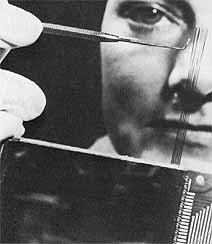 |
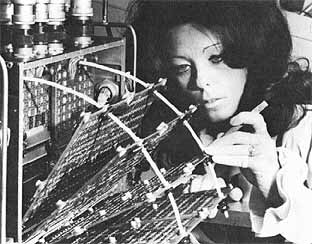 | |
|
| |
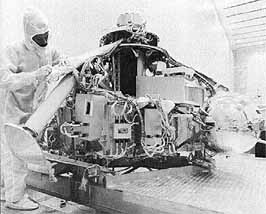 |
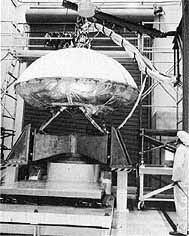 |
|
[262] (Viking simulators went through intensive environment tests to ensure the final spacecraft would function far from Earth. Above left, Viking program technician Alonzo McCann adjusts a cable on the proof-test capsule-decelerator assembly, as lander and capsule are prepared for January 1974 heat-verification tests. One of the lander cameras is to the right of center. Above right, a technician watches as an acoustic shroud is lowered over the proof-test capsule before acoustic tests in mid-June 1974. At lower right, the proof-test capsule is lifted out of the vacuum chamber at Martian Marietta, Denver, in October 1974 after a month-long series of rigorous tests to qualify it for operations on Mars.) |
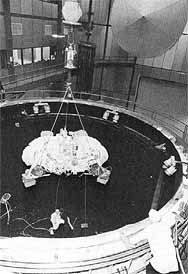 |
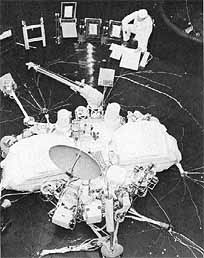 |
|
|
[266] (Science end-to-end tests sought to verify complete performance of the Viking scientific instruments and familiarize scientists and flight operators with the total operation of Mars investigations. Above, a technician prepares the proof-test-capsule lander for the environment and SEET tests. At right, sample boxes are positioned for testing the lander's surface-sampler assembly.) |